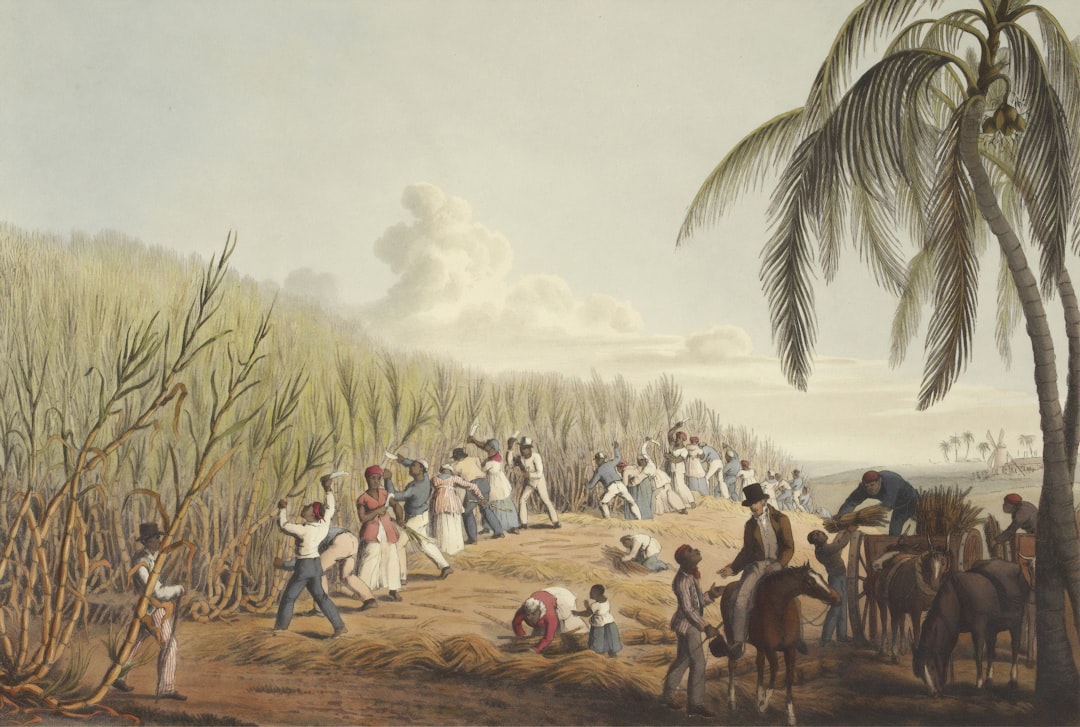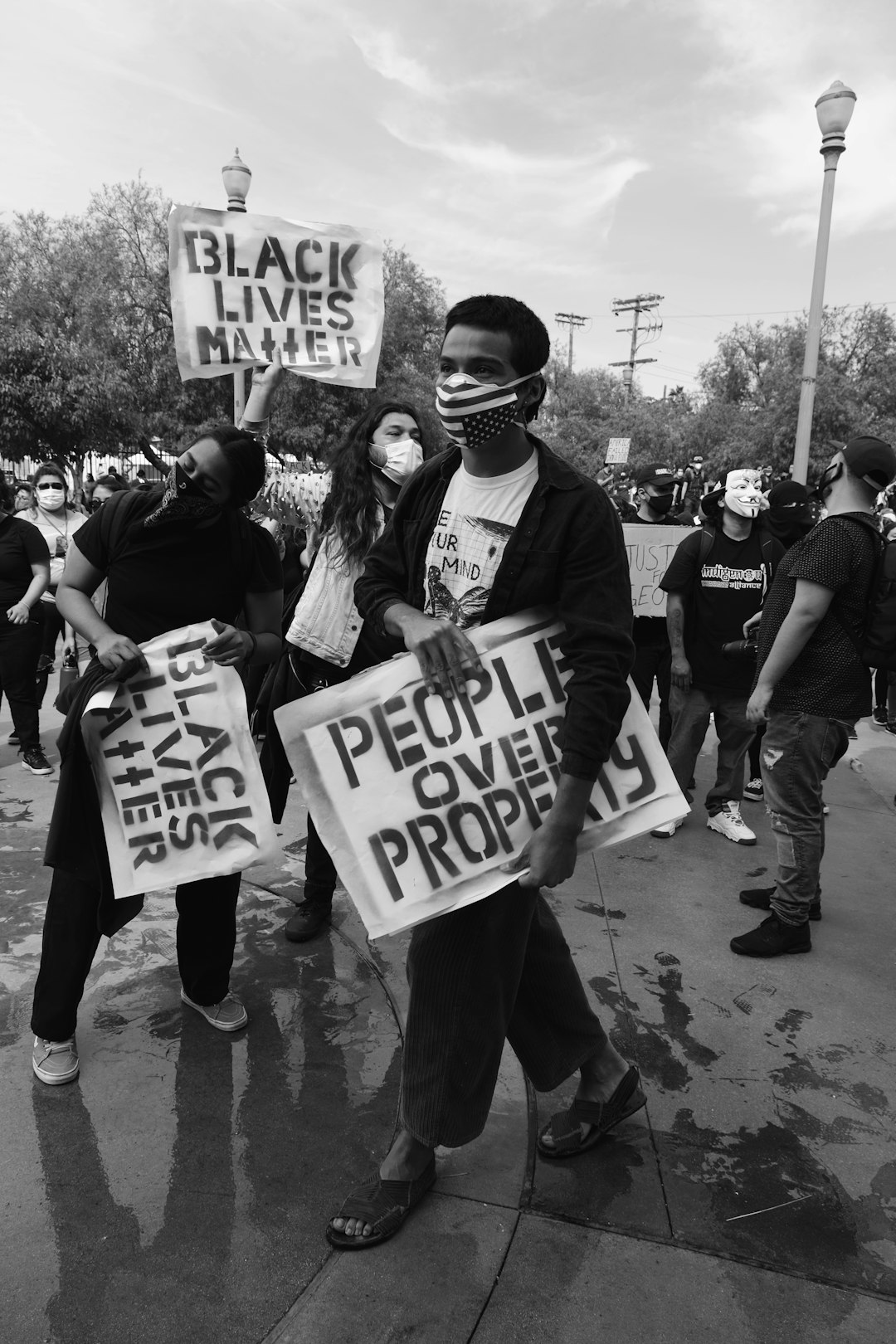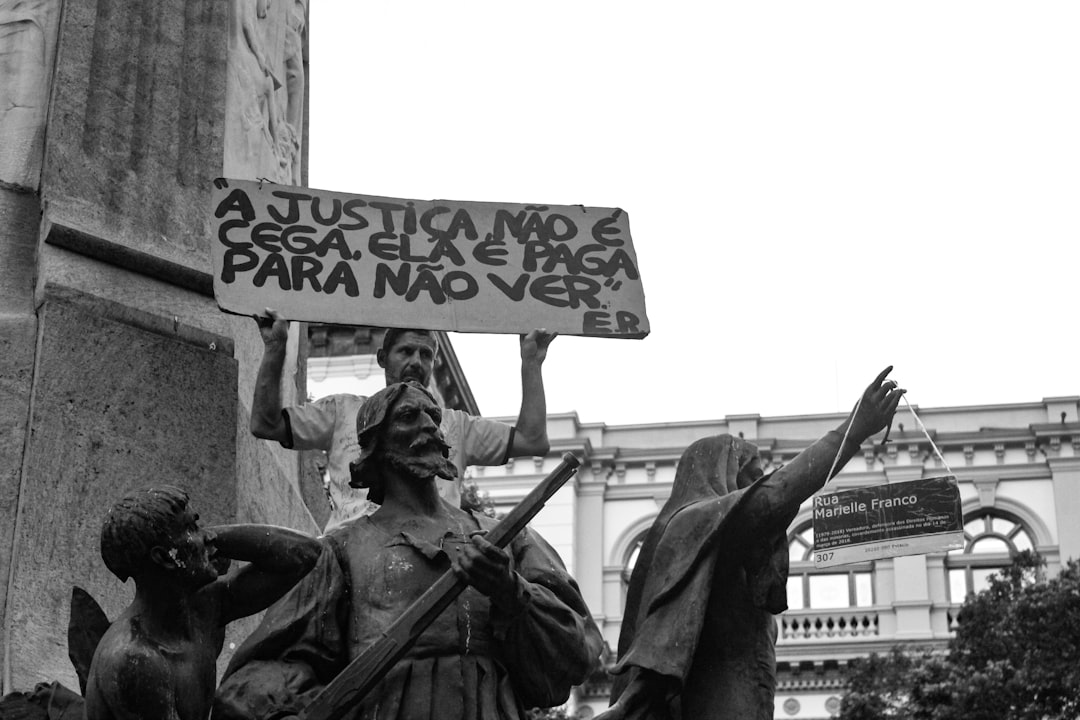“When you see the details of this case, there’s just no way you cannot think of Eric Garner,” community activist Marques Travae said. Except Travae was not referring to George Floyd, the black Minneapolis resident who suffocated under the knee of a local police officer. Rather, he was referring to Pedro Henrique Gonzaga, a Brazilian victim of police brutality, who was strangled to death by a security guard in February 2019. Smartphones recorded the horrific scene, one all too familiar to the residents of Rio de Janeiro. In 2019, the police killed 1,814 people in Rio de Janeiro alone, a city with a smaller population than New York City. In other words, the police killed nearly five people per day in Rio—an 18 percent increase from 2018 to 2019. By contrast, the Washington Post estimates that 1,009 people in the entire United States were shot and killed by the police in 2019.
Police brutality in the United States consistently makes global headlines and sparks international outrage. At first glance, Brazilian police brutality seems like a disparate phenomenon from American police brutality. Compared to the United States, Brazil is a relatively young democracy, and some argue that violence perpetrated by law enforcement is a vestige of authoritarianism the country has yet to outgrow. Additionally, gangs are embroiled in a bloody war across Brazil, constantly skirmishing between themselves, police forces, and private militias. Thus, police brutality could just be the natural result of the government responding to criminal activity. American police brutality is usually viewed as a product of antiblack racism; Brazil, by contrast, has long been touted as a “racial democracy” with high rates of intermarriage and a minority white population.
However, this perceived difference does not hold up to scrutiny. Brazilian police brutality shares many characteristics with the practices of law enforcement in the United States. Comparative analysis between police brutality in the two countries reveals three major similarities. One, black and dark-skinned citizens experience disproportionately high rates of police brutality in both countries. Two, police forces in both countries are highly militarized. And three, police brutality in both countries is the result of shocking weaknesses in regulatory policy.
Sharing an Original Sin: The Transatlantic Slave Trade

Both Brazil and the United States participated in the transatlantic slave trade, in which upwards of 15 million Africans were captured, sold, and transported across the Atlantic. Understanding the history of slavery is essential to grasping similarities between modern policing practices in the two countries.
The transatlantic slave trade has determined modern race relations in both countries in many ways. While US involvement in the slave trade is heavily discussed in academia, Brazil’s involvement in the slave trade is often overlooked. Brazil actually eclipsed the United States as the largest importer of African slaves, with seven times more slaves than the United States. As a result of the slave trade, both countries have large black populations. But while the US legacy of slavery transformed into Jim Crow and other overtly discriminatory policies toward black people, Brazil did not develop the same apartheid state.
Unlike the United States, from Brazil’s abolition of slavery in the late 1880s until around the 1930s, Brazil was a majority black and mixed-race country. Brazil’s demography initially led to a vastly different dynamic from the United States, where a majority white population had the political capital to institutionalize overt racism. The process was more insidious in Brazil. Starting in the 1930s, scientific racism, which contends that white people are biologically superior to other races, took hold of Brazil’s immigration policy. The government implemented a series of policies that heavily encouraged immigration of white Europeans and discouraged any Asian and African immigrants. As a result, Brazil remained a majority white country from the 1930s until 2010.
The impact of Brazil’s dramatic demographic change as a result of scientific racism is most clearly exemplified in the country’s different racial outcomes. Black and brown Brazilians earn half of the income of white people on average. The middle and upper class of Brazil are almost entirely white. Black and brown Brazilians earn 25 percent less than their white counterparts in equivalent occupations. And critically, black and brown Brazilians are much more likely to experience a human rights abuse, including police brutality.
On the other hand, the United States has more famously suffered through iterations of institutional racism, from slavery, to Jim Crow, to the prison industrial complex. The impacts of institutional racism in the United States are clear: black Americans are more likely to die from various diseases including COVID-19, earn less than their white counterparts, receive a worse education, and live in poverty.

Predictably, these broader racial inequities manifest themselves in racialized police brutality in both nations. In Brazil, black and dark-skinned people, especially men, face targeting by law enforcement: 91 percent of young black men in São Paulo were stopped by the police in 2004. Indeed, the Inter-American Commission on Human Rights has highlighted that Brazil’s black and poor communities face disproportionate police brutality. Likewise, a Brazilian congressional committee did not mince words about the problem: the “Brazilian state, directly or indirectly, perpetrates the genocide of the young black population.”
Similarly, police kill black Americans at a rate almost double that of white people. As of June 2020, there have over 400 instances of fatal police encounters this year. Police departments are not required to report instances of brutality, so data is collected independently by news organizations and nonprofit organizations—the actual number is likely much higher. Black men face a one in 1,000 risk of being murdered in an encounter with the police, substantially higher than the risk for white men. There is little doubt that race contributes to this abhorrent statistic: studies consistently find that black men are more likely to be perceived as threats by white people, increasing the likelihood of fatal or violent encounters.
Ultimately, the legacy of slavery heavily influences the victims of police brutality in Brazil and the United States. While race relations in the two countries appear different, the impact of slavery and continued racism leads to the disproportionate murder of black and dark-skinned individuals in both nations.
Tanks in the Streets

Police access to military-grade equipment also contributes to elevated murder rates. In Rio’s favelas, or slums, police raids are part of everyday life. Helicopters circle overhead as snipers on board take aim at local targets of police action. Schools put up signs to discourage police from shooting children. Tanks roll through the streets of poor neighborhoods multiple times each week. Residents are trapped in their homes; school and work are canceled for the day. The police go house-to-house, and gunshots ring out constantly. Dozens can die in a single raid.
Militarism is built into the structure of Brazil’s police. There are two types of police in Brazil: the military police and the civil police. The military police are a remnant of the previous dictatorship’s policing structure that used the military to keep domestic order. The civil police largely deals with investigations and intelligence, such as undercover work, aiding judicial officials, and commerce control. The military police more directly deals with crime control, so the vast majority of Brazilians encounter the military police. And unsurprisingly, the military police has a much higher rate of police brutality. In addition to the rampant militarization of the military police, its culture emphasizes an us-versus-them mentality common in military training. Police stations look like fortresses, imposing and battle-ready. From the top down, according to Fernando Salema, a former police commander and now lawmaker, “The mold is that of the military. We inherited that culture.”
Similarly, the United States has increasingly militarized its police force. Changes to the structure of policing such as an increased focus on technology and a move away from patrolling in numbers have contributed to increased militarization. Moreover, the US Department of Defense transferred military equipment valued at around USD$4.3 billion to local police departments between 1997 and 2014, both as a response to fears of growing crime in cities and as part of the war on terror. As a result, many police departments have Sheriff's Department's Special Weapons and Tactics (SWAT) teams with the express purpose of operating like mini military units. Riots in the United States are often met with police officers in full protective gear, heavily armed tanks, and armored vehicles.

In both countries, militarization causes significant damage. Human Rights Watch argues that raids in poor Brazilian neighborhoods contribute to erosion of trust in the police. According to Daniel Wilkinson of Human Rights Watch, “Military-style security operations that leave a trail of death in poor neighborhoods do not enhance public security.” These raids make community members less likely to cooperate with the police regarding gang-related activities, and often incentivize young people in the neighborhood to join the very gangs the government tries to eliminate. Often, their frustration is well-founded: according to a report by Redes da Maré, a non-profit group, a singular favela in Rio was raided 39 times in a year. These raids resulted in 34 people dead (none of whom were white), 24 school days lost, and 300 hours of living in a combat zone.
Similarly, according to a study by National Academies of Science, US SWAT teams and their equipment are much more likely to be used in black neighborhoods, and militarization of police depletes public confidence. A study on the militarized response to the Ferguson Unrest in 2014 stated, “[f]or persons who would have seen the SWAT teams arrive, the action would have resembled that of ‘soldiers arriving at a war zone.’” Militarization leads to presumption of threat; it normalizes that military grade equipment is a proportional response to the threat at hand. Excessive force is always on the table, even though domestic police forces are interacting with fellow citizens, not enemy combatants. The research could not be clearer: studies have found that the logic of militarization makes officers more likely to resort to lethal force.

It is not even clear that militarization is effective in either country. Brazilian researcher Bruno Paes Manso at University of São Paulo has stated that “There is a strong belief that violence promotes order. And the militias thrive off this feeling.” However, the evidence does not substantiate this perception: a 2019 study by the prosecutor’s office in Rio finds that there is no link between lethal police force and a decline in homicides in the state. The same study found intelligence and preventive measures were much more effective in reducing overall violence. Brazil’s recent reduction in its homicide rate is widely viewed to be unrelated to heavy-handed policing. Indeed, most studies of Latin America find that police brutality, at best, may have a very small short-term benefit before exploding into increased violence due to the creation of new warring factions and resentment toward the police.
In the United States, too, there seems to be little evidence in favor of police militarization. At best, claims that increasing access to military-grade equipment deters crime are unsubstantiated. Criminals in the United States have low rates of access to firearms and the level of weapon sophistication is relatively stagnant, making additional militarization unnecessary to respond to threats. Although studies are mixed and sparse, the most systematic research on the effects of militarization has concluded that the practice has little impact on the overall crime level. In sum: militarization leads to unnecessary death, escalating hostility, and the perception that the police are waging war against their own communities, all without achieving the basic objectives of the project.
Failures in Justice
Both Brazil and the United States have institutional weaknesses in their policing system that contribute heavily to police brutality. Common wisdom suggests that punishment deters repetition of an action. If police officers are consistently punished for excessive force, other officers might be discouraged from also using excessive force. However, in the United States and Brazil, the police often escape punishment. There are three primary types of policing institutional weakness: lax enforcement of existing regulation, absence of regulation, and density of loopholes in regulation.
In Brazil, lack of enforcement is unbelievably common; prosecution of police brutality cases in Brazil is practically nonexistent. Residents accept the police as a necessary evil. And since many officers provide protection to residents through private militias when off duty, residents often decline to report abuse for fear of lethal retaliation. Additionally, Rio’s officers frequently ignore policing rules, like the requirement that a forensic expert be called to a scene after a fatal shooting.
An absence of regulation is also a critical contributor to violence. While there are some variations across Brazil’s states, national law does not permit an officer to kill a civilian without imminent harm or legitimate self-defense. However, those regulations are exceedingly vague—perhaps intentionally so. President Jair Bolsonaro encapsulates the intention of Brazilian regulation of its police: criminals, he says, should “die like cockroaches.”
As such, loopholes are rampant in regulation. Recent legislation from Bolsonaro’s administration allows judges to easily dismiss homicide cases if the police officer simply claims self-defense. One militia leader in Pará State proudly claims, “I’ve killed more than 80 criminals in my time as a police officer. I’m a hero to my people. They love me.” Another Pará officer reflects, perhaps ironically, “It was the first time I felt like a hero. I felt like an instrument of justice.”

The US system of accountability is by no means as egregious as Brazil’s, but it shares distressing similarities. Regulation is often ignored because of a legal doctrine called “qualified immunity,” which mandates that a plaintiff must prove that a police officer violated a preexisting federal law or constitutional right. This standard is incredibly difficult to meet: most instances of brutality are fairly particular to the circumstance, so there is often no existing jurisprudence. Therefore, the majority of cases are never even pursued by lawyers, even if there was abuse by an individual or group of officers. Other forms of accountability, such as internal review mechanisms and civilian review boards, yield similarly poor results, due to lack of cooperation from the accused department. Additionally, due to changes made by President Donald Trump’s administration, a number of federal regulations have been discounted or disbanded altogether. For example, Section 14141, which provides policing guidelines, and investigatory committees, such as COPS, have been abandoned in recent years. Compounding all of these issues, officers have been unlikely to report fellow officers for conduct they perceive to be wrong, especially in instances of brutality. The result is a system that serves perpetrators of police violence.
Despite the existence of a number of accountability measures for police officers, the measures largely lack substance. In a study of the largest police departments in the country, researchers found that internal doctrine on use of force was extremely vague, failing to address even common situations. Researchers in the same study found that if the average department adopted the nonprofit Campaign Zero’s guidelines for use of force, it would see a 54 percent reduction in fatal encounters. Loopholes are rampant in internal police policy, from intentional vagueness under qualified immunity, to the very doctrine of qualified immunity itself. And powerful police unions often exacerbate existing loopholes or keep people in charge of departments that refuse to create change. The current system, in short, protects police officers and their jobs almost unconditionally.
“We want to breathe!” and “I can’t breathe!”
In Brazil, protesters yell, “We want to breathe!” In the United States, activists chant, “I can’t breathe!” Police brutality is a systematic and critical issue for Brazilians and Americans alike. While the situations in Brazil and the United States have several important differences, police brutality in both countries has similar targets, methods, and rationales.
The struggle against police brutality ought to be viewed as an international struggle. Protests against police brutality in Brazil are actually much more sparse and much less intense than they are in the United States, despite Brazil’s rates being comparatively worse. Black Lives Matter protests in Brazil largely mirror their American counterparts. Just as there have been solidarity protests in predominantly white nations, there is potential for solidarity in nations like Brazil, with its own complicated history of racialized policing. Internationalizing the issue of police brutality creates space for a broader global movement, moving beyond the firing of individual officers or another week of cultural sensitivity training.





